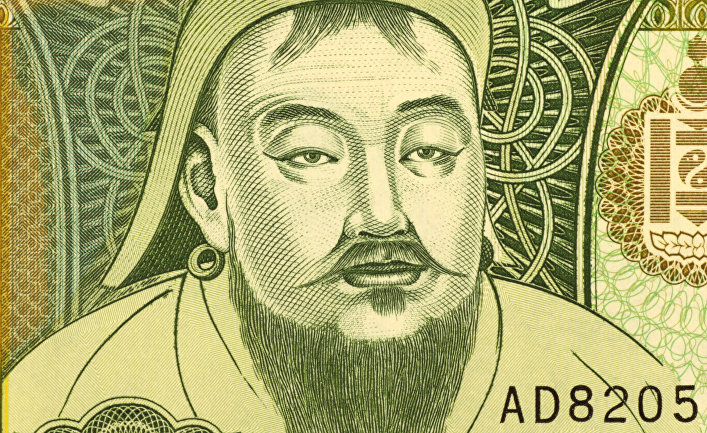
The army, in the spring of 1253 unstoppable March marched from Central Asia to the West, shocked already one in its scope: about 400 thousand horsemen and enormous herds and to top it all off the whole tent city. To this was added tactics, bringing terror to the enemies. All who refused to obey at first request, immediately and mercilessly killed; whole towns erased from the face of the Earth, elite, entire regions were destroyed and the artisans and other labor were deported to the East.
Here are the ways and means by which the Mongols during the lifetime of just two generations managed to capture the largest Empire in the history of mankind. While Genghis Khan and his descendants committed atrocities not just so, and had a completely rational explanation. “Initially, the Mongols were on the conquered territories in a numerical minority, and the destruction of the local population was only a method of “adjusting” demographic imbalance,” wrote a well-known expert on Central Asia Karenina Kollmar-Paulenz (Karénina Kollmar-Paulenz) from the University of Bern. Well, after many years of genocide to explain rational reasons.
In February 1258 the Mongols captured Baghdad and destroyed the Caliphate of ancient abbasidov, and in 1259 began the conquest of Syria. The ultimate goal of the Mongols was rich in Egypt, where at that time they were in power, the Mamluks. Being in the minority, they nevertheless entered the war. In the battle of ain Jalota the Mamluks defeated, and this victory was extremely important for the entire future world history. They stopped the advance of the Mongols and drove them back to the East. After that, the Mongols failed, none of the offensive in the West. To the question about the reasons of the great Western campaign of the Mongol Prince Hulagu failed to answer a challenge. Historians mention in this connection military and political, and structural problems.
Hulagu, brother of the new great Khan Monge, do not hurry with your trip. He had his reasons: its logistics capabilities were limited, because the organization of his troops was very difficult. The Mongol army was divided into the tum — the so-called military units numbering 10 thousand men under the command of the Khan, which can act both collectively and individually. Every Tume consisted of riders and their families and belongings, namely 60-70 thousands of ponies and 500 thousands of heads of cattle, primarily sheep. Only one pony was needed about one square kilometer per day, according to historian Reinhard Schulze (Reinhard Schulze). “This organization was based on a combination of limited space for pasture, limited water supplies, dangerous neighbors and struggle for these resources.”
But as far as the Mongols outnumbered any enemy, so they were vulnerable from the point of view of providing such a large number of people and heavily dependent on the availability of pasture and water sources. The conquest of Syria was given to them is relatively easy, because this country at that time was divided into small competing States Ayyub princes, descendants Catalina, who won in 1187 Jerusalem and drove out the crusaders. Before Yubei ruled in Egypt — as long as the lost the fight the Mamluks.
After the conquest of Aleppo in 1260, it seemed that the Mongol rule in Syria was not threatened. However, the fact that Hulagu with most of his troops had to retire, had primarily political reasons: during the siege of the fortresses to his brother Monge died; to become his successor Hulagu, apparently, not wanted, but sought to avoid conflict with hostile cousins of the Golden Horde, ruled the lower Volga.
In Syria, the Prince of Kitbuqa with his thum and several thousand riders of his Syrian allies. The requirement to obey the Mamluks responded that executed the Mongol envoy, gathered an army and went North.
The Mamluks were military slaves Asian
Initially, the Mamluks came from Central Asia. In the IX century, caliphs began to buy up on the borders of the steppes in huge amounts of young Turkish slaves whom they converted to Islam and made soldiers. These military slaves had to become a reliable guard and a “counterweight” for untrusted tribes who made up a large part of the Muslim armies. However, the Mamluk sultans started a private game and actually took power into their own hands. It happened in the later days of the Empire of Abbasids and soon became the norm in Egypt: the Mamluks ruled there remained a tradition to recruit an army of young people from Asia.
The Mamluk army also consisted mostly of horsemen, but was much more professionally prepared. The weapons they got from the arsenals. Horses have been lower than that of the Mongols, but their animals were larger and tougher. Was better and their tactical discipline, and the soldiers had weapons vital in the fight against the crusaders. Thus, the Mamluks outnumbered the Mongols in close combat, while those relied, primarily, on the bows and the mobility and maneuverability of their horses.
As the Mamluks moved along the coast almost to Accona, 2 Sep, 1260, their armies met in battle at ain Julat. The Mongols came there from the South, and the Mamluks from the North. This place was known as “the spring of Goliath.” According to legend, this is where David defeated Goliath with a sling. In regard to the strength of both armies, this time the difference was not significant. Both armies consisted of about 12 thousand soldiers.
The Mongols attacked the Mamelukes, resorting to its usual tactics: the line of horsemen have galloped away on the enemy, they released their arrows and rejoined the main forces. Thus they were able to inflict serious damage on the left flank of the Mamluks. However, on the right flank a very ambitious commander named Baybars managed together with his troops to break through the allied forces of the Mongols. When they fled, Baibars attacked the Central power Citrocasa, who had died in battle. Having lost their leader and also not being able to maneuver on an uneven surface, the survivors of the Mongol soldiers retreated and was no longer able to counter-attack.
Other attempts of the Mongols to attack also failed
Although Hulagu, located in the Western part of Iran, was sent to Syria the reinforcements that those troops were destroyed by the Mamluks. Baybars by that time had become their commander-in-chief and was ably defended by the line of the Euphrates. Mongolian khans took several attempts to regain lost territory and to get back to Syria, but since all these attempts were futile, it became clear that the battle of the “springs of Goliath” really determined the future course of world history.
And in more ways than one. Despicable steppe “Turks” has managed what you could not achieve many of the Muslim princes: they defeated the Mongols and forced to flee. Now it turns out that the Mamluks became the “saviors of Islam”, and thus they managed to legalize usurped power. At the same time they taught subjects to their simple (Sunni) Islam to which the Arabs until treated with suspicion.
In the status of “defenders of Islam” the Mamluks soon began to use his own means of power against other “infidels”. From Egypt and Syria, they surrounded the last remaining there the possession of the crusaders in 1291 won Akkon and finally drove out the Christians.
However, to defeat the Mongols, the Mamluks succeeded not only because of its power. Karenina Kollmar-Paulenz quotes from the letter of Hulagu to the French king Louis IX, in which the Mongols, wrote that the Syrian pastures “depleted” in connection with which the further supply of troops was impossible. Thus, last but not least the reason for the defeat of the Mongols were unfavourable environmental conditions in Syria and Palestine. Their great herds were simply nowhere to roam in a small area of the Levant.







